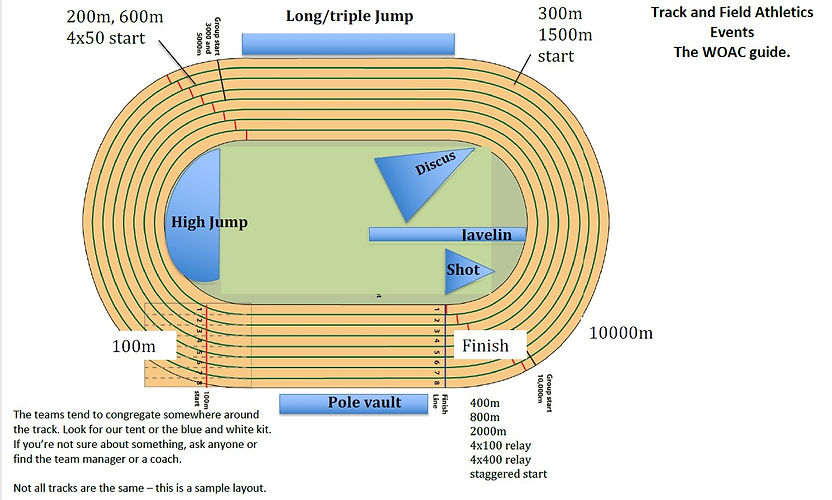WENLOCK OLYMPIANS ATHLETIC CLUB
FIXTURES
Cross Country fixtures:
9th November - Abraham Darby Cross Country
30th November - Oswestry School Cross Country
Sportshall fixtures:
16th November - Wenlock (2pm start time tbc)
7th December - Oswestry (start time tbc)
10th January - Wenlock (2pm start time tbc)
25th January - Oswestry (start time tbc)
Sportshall County Championships - Sunday 8th February - Wenlock

Lots of rules it seems, but it’s also enjoyable when things go well. IF YOU’RE NOT COMPETING, CHEER ON THE COMPETITORS!
• Club kit must be worn and they must have a number on the front and back. The numbers are pinned to the vest at the sides not the
top and bottom – make sure you know which number and it is the same front and back. The numbers are supplied by the club.
• Team managers will tell you which number to wear.
• Athletes should be at their events at least 5 minutes before the start time.
• NO-ONE is allowed in or across the central area except officials. This is the throwing area and is roped off. Athletes must stay out of
the track area (normally surrounded by a barrier) unless they are competing.
• Athletes should go to their event start or location around the outside of the track and cross at the shortest point, always looking for
runners. No shortcuts across the field if they are late! It’s a dangerous area.
• No-one should be next to the track between the 100m start and finish while any race is on, as this obstructs the view of the officials.
• Listen for announcements in case there are any changes to the event times or if the announcer calls you.
• You cannot coach an athlete during their event and all spectators and coaches must stay outside the perimeter barrier.
Shot, hammer, discus and javelin competitors are allowed 3 throws in total. Each athlete throws once in a rota.
Pole vault, long jump, and triple jump entrants are allowed 3 jumps. Each athlete jumps once in a rota.
High jump athletes jump once in a rota. They are allowed 3 jumps at each height until eliminated by a total of 3 fails or no jumps.
Runners are started by a starter (red jacket) with a starting pistol. The starter will call athletes to their mark. For shorter races they will
then go to a set position before the gun starts the race. A second shot means a false start and the race will be started again.
The starter works with a marksman who organises the athletes on the start line and checks their positions.
All races finish at the one finish line, but starts can be at a number of places around the track. Timekeepers are on a stand at the finish
line on the outside of the track. Track judges are on the stand on the inside. The track judges decide on positions and any
disqualifications. They pass their record sheet to the timekeepers who add the times before the sheet is sent to the recorder. Timekeepers
provide a time for a particular position, not a lane. All times are recorded to 0.1 of a second.
A timekeeper is also responsible for calling lap times to athletes in longer race
Spikes are worn for all events except shot, discus and hammer. They are not compulsory but do help athletes grip the surface and avoid
slipping.
We hope this helps you to understand what happens, but most of all enjoy it!